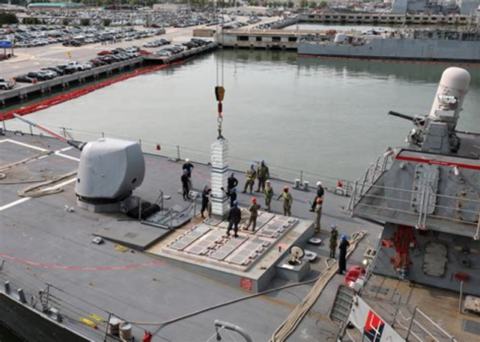 The Canadian government has — since at least 1968 — always viewed major equipment purchases for the Canadian Armed Forces first and foremost as “regional economic development” projects which channel federal dollars into
The Canadian government has — since at least 1968 — always viewed major equipment purchases for the Canadian Armed Forces first and foremost as “regional economic development” projects which channel federal dollars into vote-rich areas in need of jobs or to reward provinces and regions for their support of the party in power. This virtually always requires getting all or most of the manufacturing/construction/assembly done in Canada.
To most people this sounds sensible: big military equipment acquisitions mean vast sums of taxpayer money, so why shouldn’t as much of that money as possible be spent in Canada? The answer, in almost every case, is that it will usually be VASTLY more expensive because Canadian industry doesn’t regularly produce these exotic, spendy items, so new factories or shipyards will need to be built, all kinds of specialized equipment will need to be acquired (usually from foreign sources), companies will need to hire and train new workforces, etc., and no rational private industries will spend that kind of money unless they’re going to be guaranteed to be repaid (plus handsome profits) — because CAF equipment purchases come around so infrequently that by the time the current batch need to be replaced, the whole process needs to start over from the very beginning. It would be like trying to run a car company where every new model year means you shut down the factories, fire the workers, destroy the tools and jigs and start over from bare ground. Economic lunacy.
Items like clothing, food, non-specialized vehicles (cars, trucks, etc.) may carry a small extra margin over run-of-the-mill stuff, but it will generally be competitive with imported equivalents.1 Highly specialized items generally won’t be competitively priced exactly because of those specialized qualities. The bigger and more unusual the item to be purchased, the less economic sense it makes to buy domestically. As a rule of thumb, if the purchase will require a whole new manufacturing facility to be built, it’s almost certainly going to be cheaper — and usually faster — to just buy from a non-domestic source.
How much more do Canadian taxpayers have to shell out? Carson Binda has some figures for current procurement boondoggles:
Take the new fleet of warships being built for the Royal Canadian Navy – the River Class Destroyers. The Canadian River Class is based on the British Type 26 Frigates.
The Brits are paying between $1.5 and $2.2 billion in Canadian dollars per ship. Meanwhile, Canada is paying upwards of $5.3 billion per ship, according to the Parliamentary Budget Officer.
That means we’re paying double what the Brits are, even though we are copying their existing design. That’s like copying the smart kids’ homework and still taking twice as long to do it.
If we paid the same amount per ship as the British did for the 15 ships of the River Class, we’d save about $40 billion in procurement costs. That’s twice as much money as the federal government sends to Ontario in health-care transfer payments.
[…]
Prime Minister Justin Trudeau’s government bungled F-35 fighter jet procurement is another example of taxpayers losing out on military procurement contracts.
In 2010, the Harper government announced plans to buy 65 F-35 fighter jets for an inflation-adjusted cost of $190.8 million per unit.
The Liberal government canceled that procurement when it came to power. Fast forward to 2023 and the Trudeau government announced the purchase of 88 F-35s at an inflation-adjusted cost of $229.6 million per unit.
That massive increase in cost was totally avoidable if the Liberals would have just kept the Harper-era contract.
[…]
Because so much budget is wasted overpaying for big ticket items like ships, jets and trucks, soldiers aren’t getting the basics they need to keep Canadians safe.
The defence department bureaucrats can’t even figure out how to buy sleeping bags for our soldiers. National Defence spent $34.8 million buying sleeping bags that were unusable because they were not warm enough for Canadian winters.
Recently, Canadian soldiers sent to Ottawa for training had to rely on donated scraps of food because the military wasn’t able to feed them. Soldiers have gone months without seeing reimbursements for expenses, because of bureaucratic incompetence in our cash-strapped armed forces.
1. Note, however that during the 1980s, the Canadian army wanted to buy Iltis vehicles that were built in Germany at a $26,500 cost per unit. Getting the work done under license in Canada by Bombardier more than tripled the per-vehicle cost to $84,000.







